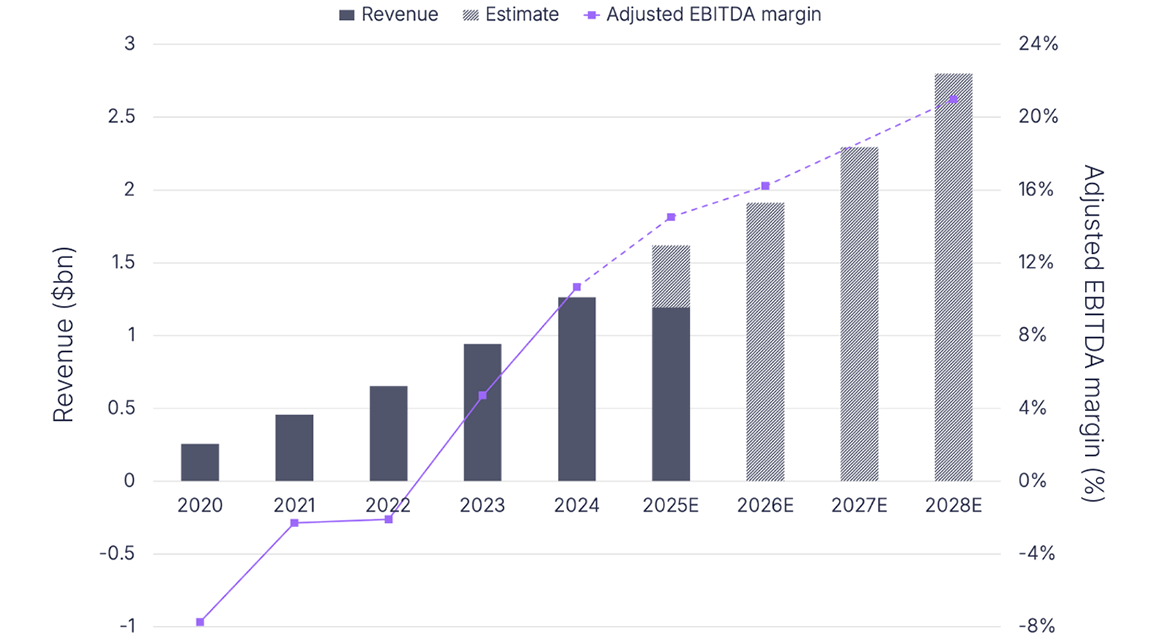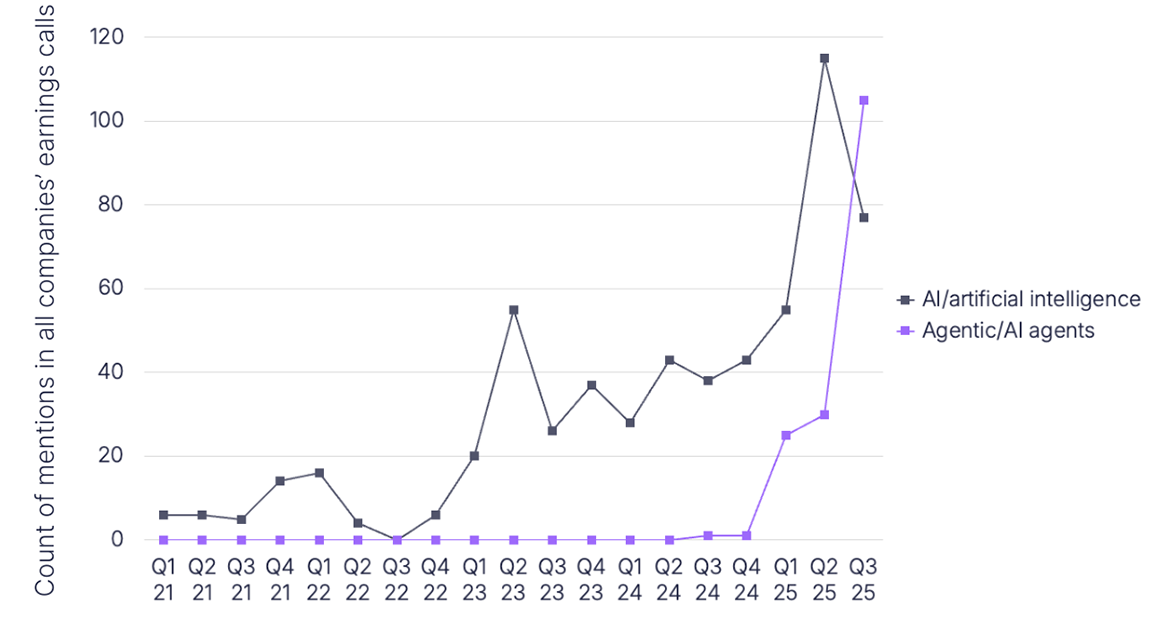Remitly has published its first results as a public company, so as part of our Post-Earnings Call Series, Remitly CEO Matt Oppenheimer discusses the company’s plans and Q3 2021 earnings.


Remitly has published its Q3 2021 results, the first as a public company, with some strong headline numbers. The company has seen quarterly revenue grow by 69% year-on-year to $121m, while active customers and send volume increased 51% and 61% respectively.
The company also used its first earnings call to provide a deeper understanding of Remitly’s market position and typical customer, as well as provide an update on the company’s partnership with Novi. We build on that in this conversation.
With this in mind, how does Remitly plan to continue its run of growth, and how does it view its evolving place in the wider market? Daniel Webber spoke to Remitly CEO Matt Oppenheimer to find out.
Drivers of core growth
Daniel Webber: Firstly, congratulations on the IPO; great first quarter. Let’s take it from the top: excellent top-line numbers from revenue, customer numbers, principal send. What’s driven that really strong growth across those core metrics?
Matt Oppenheimer:
I think it’s a few things. 69% year-over-year growth in Q3 is something that we’re really excited about, even as it compares to the other digital players and other remittance players in the space.
What has driven it is one, people looking more to digital alternatives for remittances and that’s only accelerating through the pandemic. Two, a huge commitment that our customers have to their families back home, which is often overlooked but perhaps the most important thing during economic hardship. They still prioritize getting money back to their families.
Then from a specific perspective, it’s this very focused strategy that we’ve had of localization at scale.
You followed our story over the last 10 years. We started just with US – Philippines, then we added US – India, then we added US – Mexico. That was for the first three or four years at the company, and then we very intentionally layered on new countries or new corridors, so we’ve got this nice diversification of corridors where countries we’ve been in 10 years are still growing.
We’re at 135 countries now though, so it is continuing to have this nice compounding growth as we expand across the globe in a really localized, intentional way.
Figure 1
Remitly revenue and EBITDA margin, 2019 – 2020 and 2021 estimate

Customer acquisition strategy
Daniel Webber: Talk us through how you think about acquiring customers, because we’ve run all the numbers against the rest of the sector and your unit economics, your revenue per customer they’re excellent.
Matt Oppenheimer:
The punchline is it’s a maniacal focus on unit economics. It ultimately is about building the business in a way that focuses on doing it in a high ROI way, but fundamentally has the foundation of a trusted product that builds peace of mind with customers.
I think that’s something that’s really often overlooked in the industry. There’s so much more complexity than meets the eye. When you start thinking about payment acceptance; when you start thinking about compliance, both licensing and then identity verification; when you think about the fraud and risk systems you need to build out the payment disbursement; all of those things. Remittance companies have good intent but they don’t deliver a great experience to customers oftentimes because of the complexity.
Ultimately I can talk about the unit economics, but that foundation that has to be there, which is about trust, peace of mind and our ability to cut through the complexity to deliver a seamless, easy-to-use product that doesn’t have the friction that I think you might see with some of the competitors.
Developing trust in the Remitly brand
Daniel Webber: Trust is key to being able to offer the service at a fair price, and critical in financial services. What has gone into building the brand and building that trust?
Matt Oppenheimer:
People oftentimes assume that sending funds, because there’s an intangibility, isn’t fraught with the same complexity [as ecommerce], but there’s so much complexity. And then you have to do it at a localized level.
Sending money from the US to Philippines is very different than sending money from the US to Mexico; is very different than sending money from Canada to Kenya. We really manage so many different corridors in a localized way. We have the infrastructure and foundation on a global basis to be able to do that in a faster and more seamless way, but it’s a really complex business; much more complex than meets the eye.
Once you solve that complexity and once you put yourself in the shoes of our customers – our customers are sending a big portion of their hard-earned money home.
All financial services companies require trust, but for a remittance company we’re fundamentally asking customers to give us their money as opposed to lending where those companies are giving out money.
If you put yourself in the shoes of our customers, giving us a big percentage of their hard-earned funds; giving us sensitive personal information about themselves for identity verification, ultimately it does come down to trust. And trust is just very hard to deliver when you think about the complexity inherent in remittances.
Daniel Webber: How do you think about the recipient?
Matt Oppenheimer:
It is often overlooked, which makes sense because 10 years ago it was hard to actually connect with the recipient because they didn’t have a phone or especially did not have a smartphone. Fast forward to today and it’s tied to our vision, which is to transform the lives of immigrants and their families by providing the most trusted financial services on the planet.
Increasingly we find ways to be able to reach the recipient via their mobile device or increasingly smartphone in order to make that remittance transaction experience easier.
We’re in the early days of that journey but it’s very intentionally weaved into our mission. We think over time there’s an opportunity to both deepen that relationship and to engage the recipient, who’s often picking up cash, in the remittance transaction experience to make it easier for everybody.
Figure 2
Remitly’s quarterly performance

Defining localization at scale
Daniel Webber: What do you mean by localization at scale?
Matt Oppenheimer:
It means localizing obviously by language – we offer our product in 14 different languages. It means really deeply understanding each customer and how to communicate with what matters to them, what brand. Oftentimes we’re partnering with banks in the recipient country and communicating that brand and that trust and the ways that they can pick up funds and who we partner with in a way that builds trust and peace of mind.
It means integrating with those disbursement partners in a way that’s frictionless and going to that last mile when we talk about our disbursement network and with our scale we can do more and more of that every day.
It also means doing the identity verification in a way that is locally relevant and acceptable. So different KYC: your customer requirements are different depending on the country and that has to be localized. And lastly is payment acceptance., which varies depending on whether or not you’re in the US or Canada or a variety of European countries.
We get faster at all those things because there’s patterns, there are only so many ways to collect funds, but it has to be done with a customer-first, localization-first mindset because there are big differences geographically across the different countries we serve.
Remitly’s four pillars and market differentiation
Daniel Webber: You have very strong unit economics. What are the levers you’ve worked on to really sharpen your unit economics to where they are now?
Matt Oppenheimer:
If you look at the four pillars that have made us successful, we’re going deeper into all four of them, which are mobile first, localization at scale, our global payments network – both payment acceptance and disbursement – and then a data-driven approach.
If you look at it from that lens, there’s a couple things that make our unit economics strong. One is going back to the trust and peace of mind and lifetime value that comes with that trust and peace of mind. That’s not easy to deliver and deliver on a global scale but at a local level.
The second is we’re very data driven around our customer acquisition and the amount that we’re willing to pay and invest in that customer relationship, depending on what the lifetime value is.
That varies depending on the corridor, the marketing panel and tends to be even more analytical data driven, such that we’re adjusting different tools and things that we’ve built on our end like promotions, such that we can adjust and match the customer acquisition cost with the lifetime value that we’ve got a lot of data around for that specific marketing channel and that specific corridor.
A lot of the marketing channels, marketing tools, marketing platform, marketing team that we’ve brought in help on the customer acquisition side. And then all the foundation of the lifetime value based on the product we built, the mobile-first mindset and the trust that we’ve built with our customers.
Daniel Webber: Which of those pillars do you focus on differentiating against the market? There’s always new players, and the big names that we know, so how have you thought about that and how do you continue to differentiate as you go forward?
Matt Oppenheimer:
Ultimately our differentiation, if you were to ask our customers, is about peace of mind and that’s very hard to deliver given the complexity. The way that we deliver that is through those four pillars around mobile first, our global payments network, localization at scale and being data driven. That ultimately results in more peace of mind to customers. And the great thing is that there is this flywheel effect that as we are scaling and growing we can invest way more in our systems.
Think about our disbursement network, just to think about one of those areas. We’ve got more scale with Remitly for Developers, where we’re giving other folks access to our network to be able to disperse funds through RfD. That gives you even more scale on the network point specifically. It gives us the ability to do more and more direct integrations per quarter such that the customer experience is getting better and better because there are fewer transactions that are sidelines.
There are fewer banking outages, if there are outages we can re-root the transaction. If there’s a compliance check on the recipient side then we’ve got a much more direct relationship to clear that transaction quickly.
More scale gives us the ability to further differentiate as we think about really building peace of mind with customers and this industry, which is something that historically has not been done.
Network quality and reach
Daniel Webber: How do you define having a quality network? Is it the number of integrations, the quality of integrations?
Matt Oppenheimer:
I think it’s about depth and breadth. On the breadth side the first thing that is really important to understand is we offer a wide range of disbursement options.
So not only can we send to 115 receive markets but we can send to hundreds of millions of mobile wallets. We can send to billions of bank accounts. We can send to over 300,000 cash pickup locations. We can send to localized door-to-door delivery, not applicable to most markets but in a handful of markets it’s the preferred way to receive funds.
We’re good at getting money to customers the way that their recipients want to receive them and I think that’s important.
On depth, the integrations have to be done right. We’ll get to Remitly for Developers in a minute, but the reason we call it Remitly for Developers when we talk about our API is we’ve done it in a way that it really integrates seamlessly with our disbursement partners, in a way that reduces a lot of friction out of the system.
And second, when I say depth, it’s doing more direct integrations. Sometimes we’ll work with an aggregator to get into a market, but when we see more volume we’ll go deeper and deeper, doing direct integrations with the specific bank or financial services institution, usually multiple ones within each country.
That is where there’s the opportunity to drive out a lot of friction because there’s no intermediary. The transaction amendments, transaction delays, compliance checks, all of those things can be sorted for customers much quicklier and much easier.
There is also a cost advantage, but I almost don’t even mention it because that’s secondary to the customer benefit but ultimately ties to bringing peace of mind to customers by doing more direct integrations and we can do more of those as we get more scale.
Figure 3
Quarterly send volume and number of active customers

Remitly for Developers and partnering with Novi
Daniel Webber: Let’s talk about Remitly for Developers. We’ll get to your partnership with Novi in a minute, but who is the core user for that, and who do you want to be using it? How close a competitor will you let use it?
Matt Oppenheimer:
There’s a wide range of businesses that could be the core customer for Remitly for Developers. It’s any business that has customers, employees or a need for people in their ecosystem to be able to disperse funds in Asia, Africa, Latin America, in that wide range of disbursement options. There’s a lot of businesses that we’re seeing have interest in that.
We’re willing to partner with companies in the remittence space or in the broader crypto space because we believe that the industry is very large. We have 1% of the $1.5tn that’s sent everywhere. There’s also different segments of customers that can be served within that 1.5 trillion and so it can give us access to different potential customer segments in a way that is beneficial to our customers, beneficial to our business and beneficial to accomplishing our long term vision.
We can talk about Novi in a minute but we’re incredibly excited about that partnership and we’re incredibly excited about partnering with businesses that have enough scale, that have the right compliance and other systems in place. We have a high bar for those things but that ultimately can help us accelerate the accomplishment of our vision.
Daniel Webber: It doesn’t have to be remittances, right? It can be the gig economy, the B2C ecommerce model, anything that requires a payout to an individual at the end?
Matt Oppenheimer:
Exactly.
Daniel Webber: Let’s talk about Novi, which has got a lot of attention. In one sense for you it’s hedging, because if digital currencies or stablecoins become mainstream then you’re partnering with one of the leading groups. Talk us through how you’ve thought about Novi.
Matt Oppenheimer:
We’re incredibly excited about the partnership with Novi and with other potential crypto companies that are interested in our RfD product. Ultimately it allows us to monetize our large network that we’ve built with a potential different use case than our core remittance business.
Keep in mind that while remittances are a feature of a Novi wallet, it’s a cross-border wallet and not a specifically a remittance product. The customers who are interested in these products are different than our core customers. Which gives us the opportunity to expand into an adjacent customer segment.
The thing that I’m pleased about compared to other remittance companies in the space, is that instead of reacting we’ve been talking with Novi for over a year and we’ll have material upside in market. Ultimately we can talk about the crypto space broadly and how we think about direct-to-consumer potential disruption, but we feel really good about our strategy and are really excited about our partnership with Novi.
Daniel Webber: That makes a lot of sense. Matt, the last word must always be yours. Is there anything else you want to mention?
Matt Oppenheimer:
The one thing that we tried and we got a lot of great feedback from, including from analysts and from a lot of investors that we’ve chatted with, is it all comes back to our customers and the customers’ story specifically. We got great feedback at the end of the earnings call and that was a unique approach because everything goes back to our customers.
That’s often missed and misunderstood by investors. I don’t think a lot of investors are in our customers’ shoes and know what it’s like to send big portion of their money back home. And know what it’s like to really have some additional fear of providing a lot of their sensitive information to a digital provider that they’ve just not used before because they’re used to going into that physical cash location in their community.
The more that investors and the industry can really put themselves in the shoes of our customers, really understand the challenges that they face and the things that they care about, the better the overall understanding and conversation about the market will be and it just makes it so much more meaningful: our customers are amazing.
That’s the biggest thing I’d say at the end is just get to know our customers, they’re amazing, inspiring individuals and by understanding them I think folks will have a much better sense of the industry.
Daniel Webber: Matt, thank you for your time.
Matt Oppenheimer:
Thank you.
The information provided in this report is for informational purposes only, and does not constitute an offer or solicitation to sell shares or securities. None of the information presented is intended to form the basis for any investment decision, and no specific recommendations are intended. Accordingly, this work and its contents do not constitute investment advice or counsel or solicitation for investment in any security. This report and its contents should not form the basis of, or be relied on in any connection with, any contract or commitment whatsoever. FXC Group Inc. and subsidiaries including FXC Intelligence Ltd expressly disclaims any and all responsibility for any direct or consequential loss or damage of any kind whatsoever arising directly or indirectly from: (i) reliance on any information contained in this report, (ii) any error, omission or inaccuracy in any such information or (iii) any action resulting there from. This report and the data included in this report may not be used for any commercial purpose, used for comparisons by any business in the money transfer or payments space or distributed or sold to any other third parties without the expressed written permission or license granted directly by FXC Intelligence Ltd.



